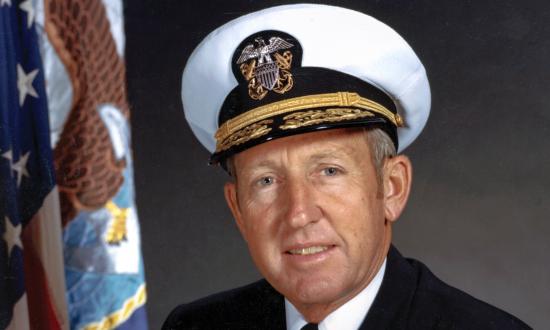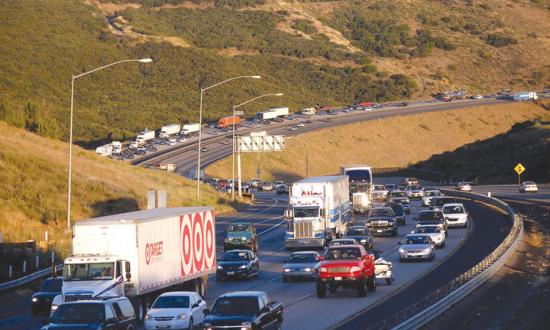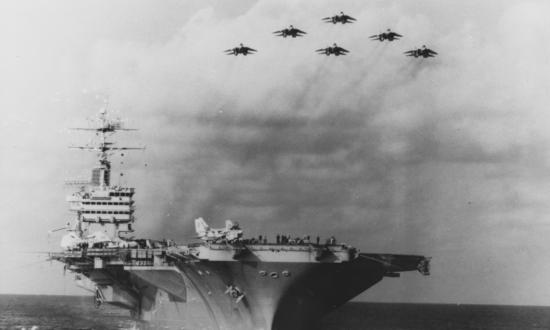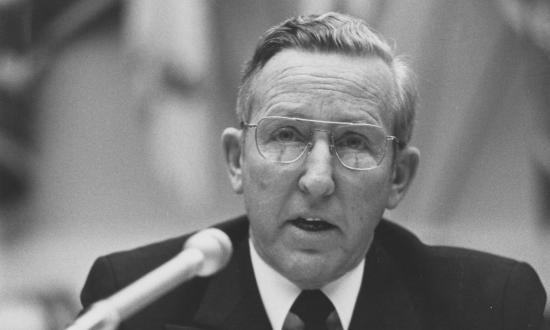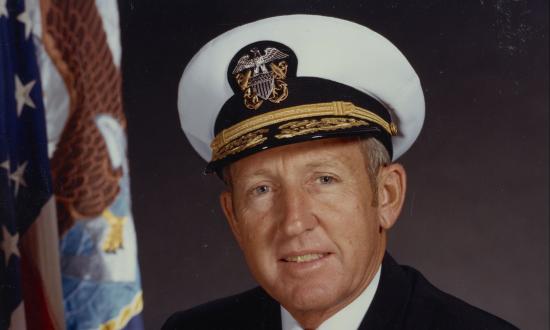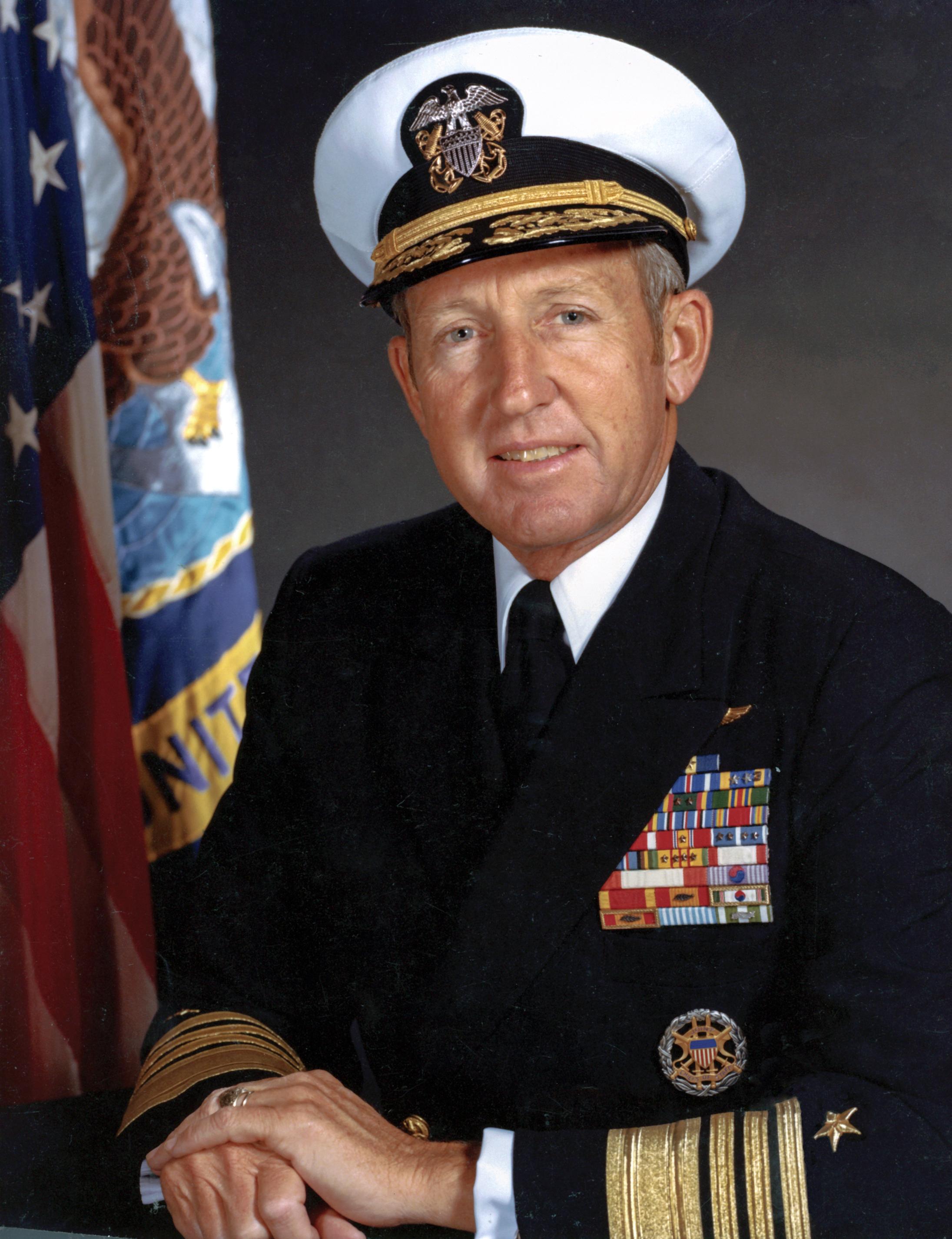
As Chief of Naval Operations, Admiral Hayward was noted for his role in formulating U.S. maritime strategy and for drastically reducing the amount of illegal drug use on the part of Navy officers and enlisted personnel. He entered the service in World War II through the V-5 Naval Aviation Cadet Program, then transferred to the Naval Academy, from which he graduated in 1947. He served 1947-48 as a junior officer in the aircraft carrier USS Antietam (CV-36) and underwent flight training from 1948 to 1950. From 1950 to 1953 he flew in Fighter Squadron 51 (VF-51), including Korean War service. From 1954 to 1956 attended Test Pilot School and flew as a test pilot. He attended Aviation Safety Officers School at the University of Southern California in 1956, then served 1956-58 in All-Weather Fighter Squadron Three (VFAW-3). He was a student at the Naval War College, 1958-59 and in the late 1950s had a tryout as a potential astronaut. He was executive officer of Fighter Squadron 211 (VF-211), 1959-61, and served 1961-63 as administrative aide to the Secretaries of the Navy, John Connally and Fred Korth. In 1963-65 he was executive officer, and later commanding officer, of Fighter Squadron 103 (VF‑103). He served 1965-66 as Commander Carrier Air Wing Ten, (CVW-10) during Vietnam War service. In 1966-67 he was a student at the National War College. He commanded the fleet stores ship USS Graffias (AF-29) in 1967-68 and served 1968-69 as executive assistant to the Under Secretary of the Navy. Captain Hayward commanded the attack aircraft carrier USS America (CVA-66), 1969-70. In his first flag billet, he served 1970-71 as Commandant of the Fourteenth Naval District in Hawaii. From 1971 to 1973 he was Director of the Office of Program Appraisal for the Secretary of the Navy. During that time, in 1972, he was involved in U.S.-Soviet negotiations that led to the Incidents at Sea agreement. In 1973-75 he was the Navy’s Director of Program Planning, then served as Commander Seventh Fleet in 1975-76. From 1976 to 1978 was Commander in Chief Pacific Fleet, then capped his career by serving as Chief of Naval Operations, 1978-82.




